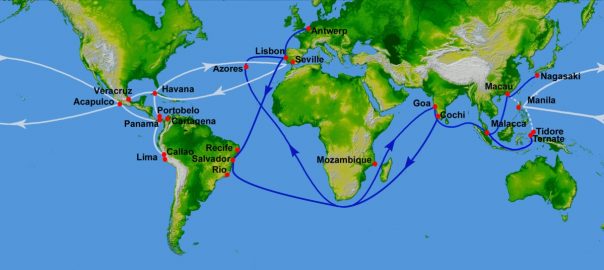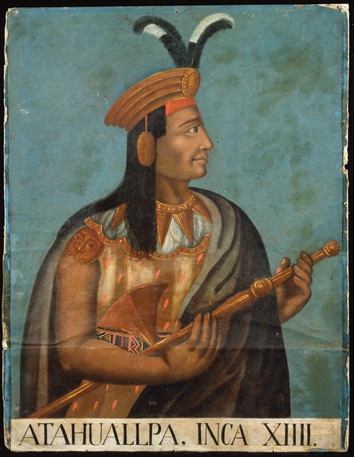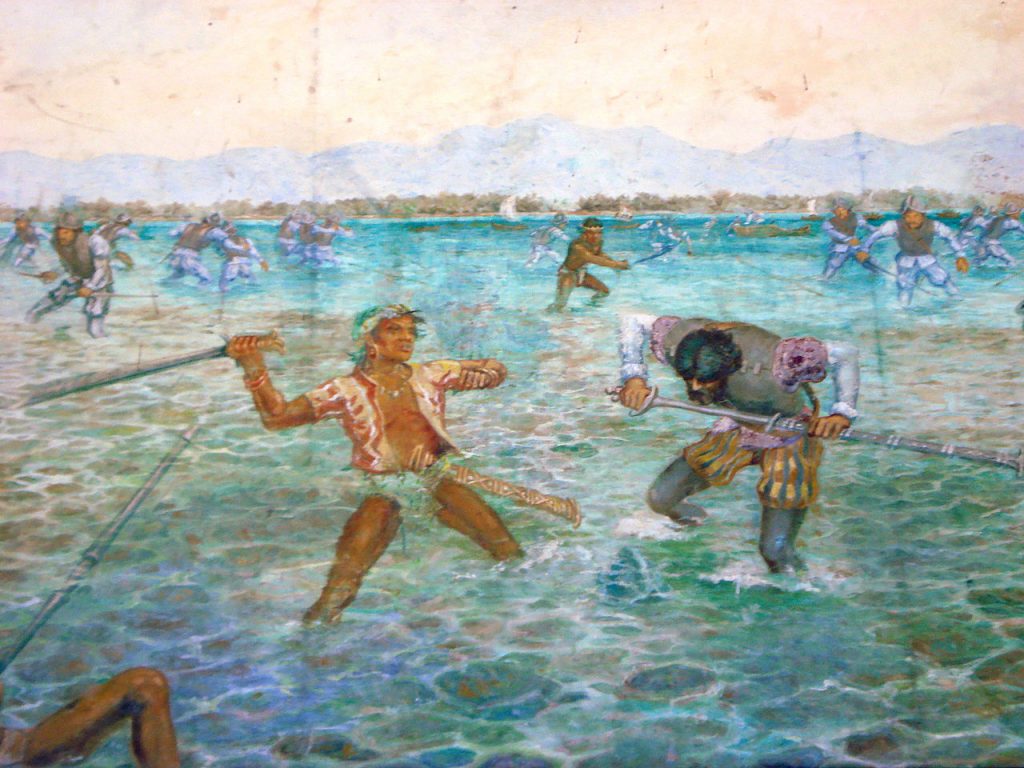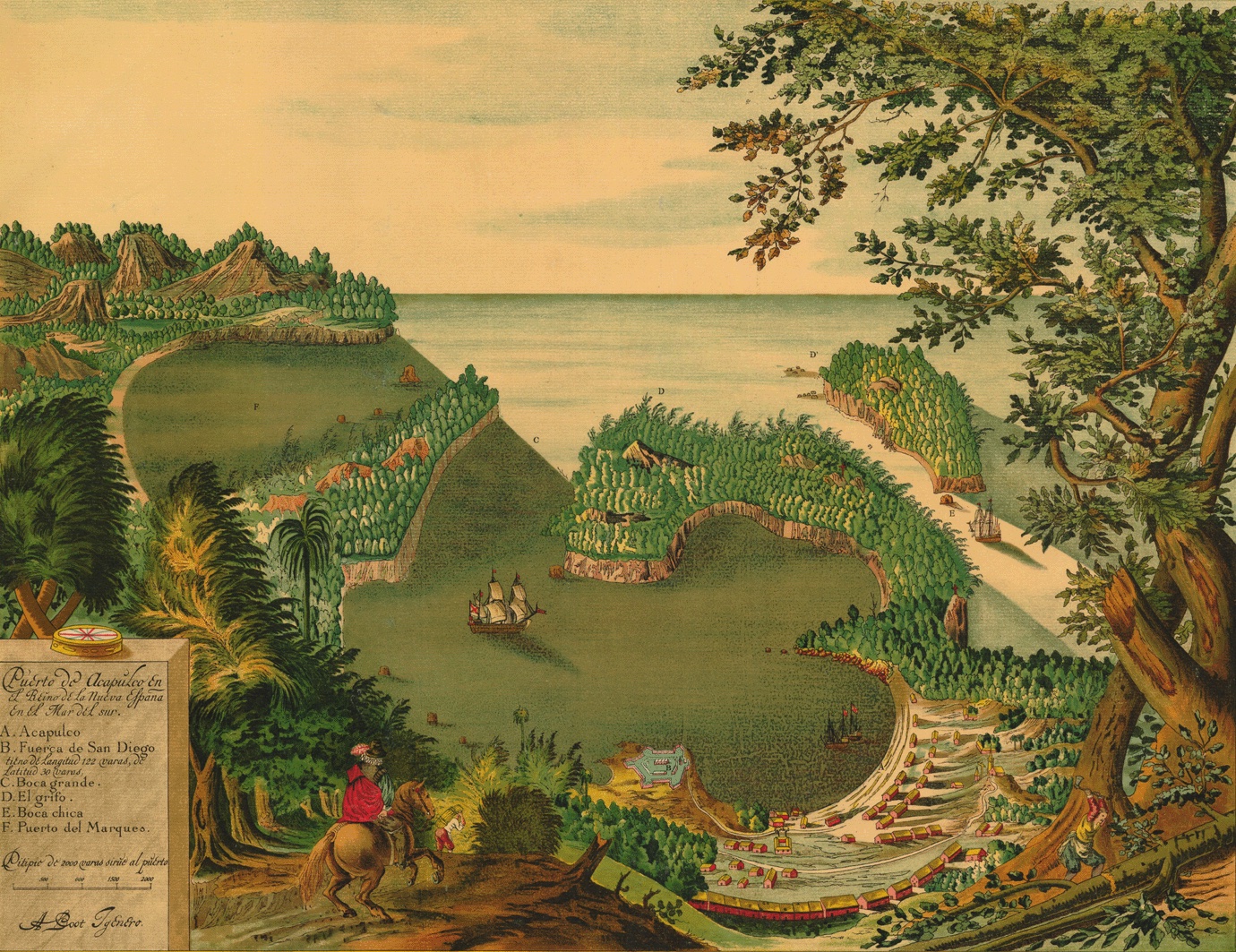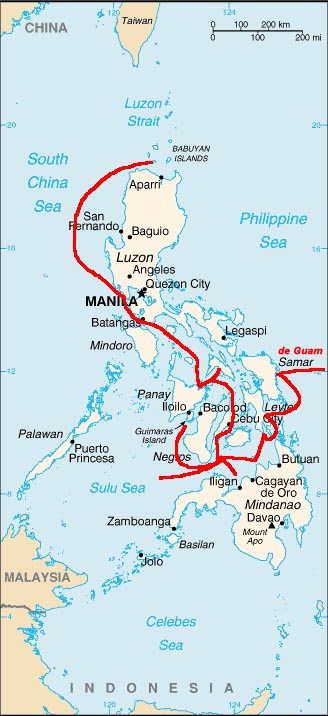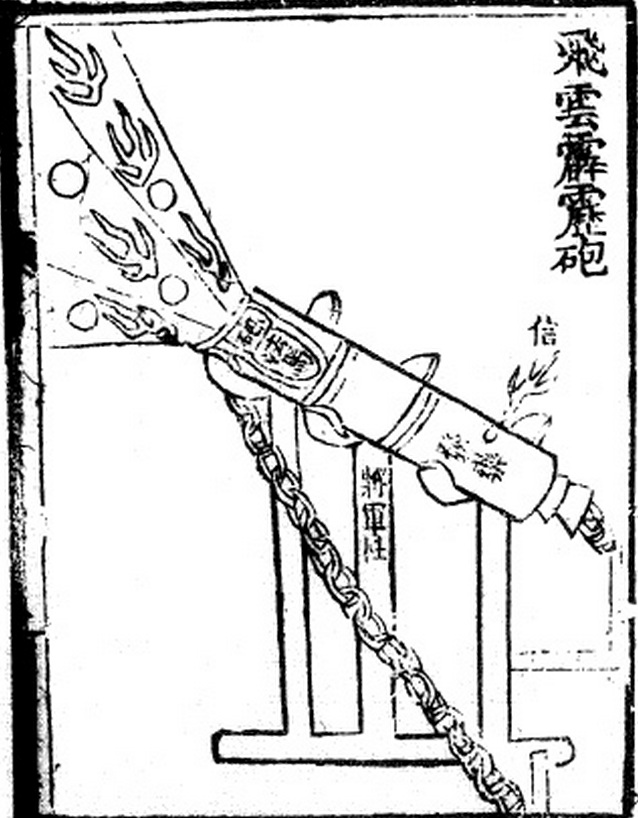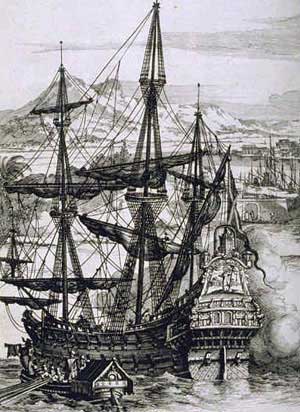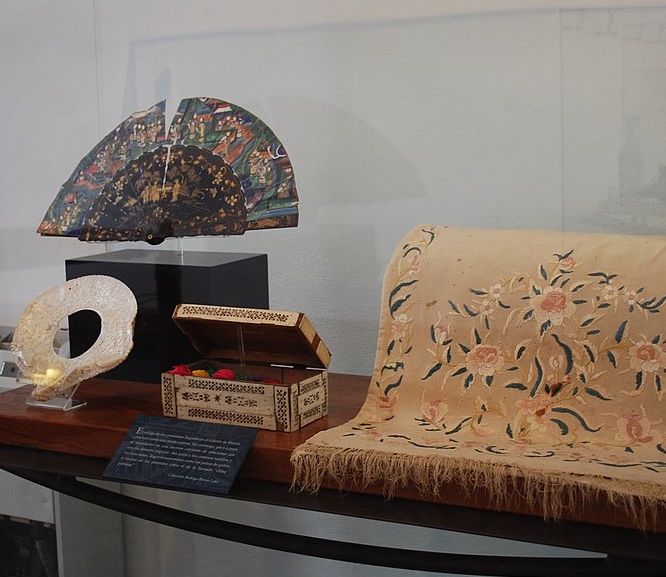In 1511 CE, Portugal became the first of the European empires to establish a presence in East Asia. That was the year in which conquistador Afonso de Albuquerque established the first of the Portuguese empire’s characteristically heavily-armed trading/raiding outposts at Malacca, a strategic choke-point in today’s Malaysia that has always been a major node of East Asia’s most profitable trading routes. Three years later, Albuquerque despatched one of his captains to establish a trade route with China, and from 1543 on there were apparently fairly regular Portuguese sailings between Malacca, China, and Japan.
For all that period, the Portuguese conquistadors and captains in East Asia were able to communicate with their imperial capital in Lisbon only via the lengthy sailing routes that went from East Asia, to Goa on the west coast of India, which was the capital of their colonial project in the Indian Ocean, and then around the southern tip of Africa and up through the Atlantic to Portugal. As you can imagine, those routes took many weeks to sail and were heavily dependent on catching the right winds. Those patchy lines of communication left the commanders in East Asia relatively free to pursue the plundering and violence that lay at the core of their empire-building project almost wholly untrammeled by any supervision from “home”.
The Castilians/Spanish were much later than the Portuguese to start building a transoceanic empire. Throughout the early decades of the 16th century, their conquistadors focused most of their efforts on the various shores of the Caribbean, whose riches Christopher Columbus had first encountered in 1492. From their bases in Hispaniola (today’s Dominican Republic) and Havana, Cuba, they made various forays to the Caribbean shores of mainland North and South America. Then in 1521, the brutal Spanish conquistador Hernán Cortés succeeded in completely conquering the large, mainland North America empire of the Aztecs, whose territory in today’s Mexico was thereupon renamed the “Viceroyalty of New Spain.”
Eleven years later, another Spanish conquistador, Francisco Pizarro led a successful campaign to subdue and capture Atahualpa, the head of the Inca Empire in Peru. The Incas continued resisting for 40 more years, but by 1572, the Spanish had decisively won. They thereafter ruled the whole of the area they controlled in South America, and in Central America up to and including the thin isthmus of Panama, as part of the “Viceroyalty of Peru. “
(Back in 1494, in the Treaty of Tordesillas, the Pope had “allocated” the right to colonize a broad eastern slice of South America to Portugal, while he gave the right to colonize the rest of the Americas to Spain.)
But not all the colonizing plans of the Spanish monarchs were focused on the “New World” of the Caribbean Basin and the Americas. In 1518-19, an ambitious new Spanish King, Charles I, became tempted by a new maritime exploration project– just as his grandparents, Ferdinand and Isabella, had been tempted a quarter-century earlier by Columbus’s audacious plan. This time, what tempted Charles was a project by a disaffected Portuguese sea-captain called Fernão de Magalhães (Ferdinand Magellan) to sail to the fabulously rich “Spice Islands” of East Asia by approaching them from the Pacific, not the Indian Ocean.
Magellan had earlier sailed to Malacca with the Portuguese. So he knew his way around the seas of East Asia and he brought to King Charles much valuable information about the tricky navigating challenges in the region.
With Charles’s backing, Magellan set sail from Spain (presumably Seville?) in September 1519. It took him more than two years of hard sailing to go around the tip of South America and across the Pacific, to reach first Guam and then the island of Samar, located in the east of what are today the Philippine Islands, which he claimed control of on behalf of Spain.
Magellan himself was killed there, off the coast of Mactan Island, by forces loyal to the Datu (chief) of Mactan, Lapulapu. Other captains then explored other parts of the island chain a little more before they brought the expedition’s remaining ships back to Spain– which they did by sailing westward, along the “Portuguese” route. The Portuguese were furious that their renegade captain had registered such a great achievement for the Spanish. But in the 1525 Treaty of Zaragoza their king and Spain’s Charles reached agreement on a new division of the world between their empires in the East Asian seas, that mirrored the one they already had in the Atlantic.
For the Spanish, their lines of communication with East Asia were even longer and more complex than Portugal’s. The route Magellan had “discovered” around the southern tip of South America was harder to navigate than Portugal’s around the Cape of Good Hope. Plus, between Good Hope and East Asia the Portuguese had the well-developed nodal point of Goa and a whole series of other ports around the Indian Ocean in which their ships could stop for resupply or trading.
Also, the empire-building projects that Spain was engaged in in the Americas continued to absorb huge amounts of manpower and investment– though over time, the silver mines they developed to extract the mineral wealth of Peru and Mexico made their ventures there increasingly profitable. But in the 45 years that followed Magellan’s expedition, the Spanish dispatched only one small follow-up expedition to East Asia’s Spice Islands. That one was sent in 1543. Its most notable legacy was that its commander bestowed on the island chain that Spain claimed there the name of the country’s next new King: Philip.
However, in the course of developing their system of resource extraction/looting from South and Central America, the Spanish administrators built a well-functioning infrastructure of ports along the region’s Pacific coast, from Acapulco in New Spain, down through Panama to Lima in Peru. In 1564, the Viceroy of New Spain (Mexico) was ready to despatch a serious colony-building expedition from New Spain’s Pacific shore over to the Philippines. It was headed by the veteran conquistador Miguel López de Legazpi. English-Wikipedia tells us that in November 1564,
five ships, carrying 500 soldiers, over half of whom were Mexicans (Criollos, Mestizos and Indios) and the remaining, Spaniards, sailed from the port of Barra de Navidad, New Spain, in what is now Jalisco state, Mexico…
In 1565, they landed in the Mariana Islands, where they briefly anchored and replenished their supplies. There they fought with Chamorro tribes and burned several huts…
The expedition continued on to the present-day Philippines, landing–and fighting– at various spots spots there until in late April 1565 it landed in Cebu. There, Rajah Tupas challenged the Spaniards, but was overpowered. López established a colony there, naming it “Villa del Santisimo Nombre de Jesús” (Town of the Most Holy Name of Jesus.)
In 1570, López sent one or more exploratory expeditions to Luzon, a richer island to the north. He wanted to use Manila Bay as a base for trade with China. The Spanish expeditions there were resisted by a leader whom they called “young Bambalito of Macabebe” who was able to raise a force of 2,500 to resist them; but his resistance failed. López himself had remained behind in Cebu because of his advanced age. But after the defeat of Bambalito, López moved to Luzon, where in 1571 he established the first Spanish Governorate of the Philippines in Manila. He died there in 1572.
The Spanish rapidly built up Manila as a port for trading with other East Asian islands and with China. But administratively, the Spanish Philippines still remained subordinate to the Viceroyalty of New Spain. English-WP tells us that the new colonial outpost in East Asia
effectively created the trans-Pacific Manila galleon trade, in which silver mined from Mexico and Potosí [Peru] was exchanged for Chinese silk, porcelain, Indonesian spices, Indian gems and other goods precious to Europe at the time. The trade… products [were] even carried over to Europe via the Havana Galleons, while heavily financing the Spanish Empire.
For the Chinese and other other peoples of the very technologically developed economies of East Asia, the trade product they most prized from the Spanish empire’s newly developed trade routes was the silver from Peru and Mexico.
The European manufactured goods that López and his associates shipped all the way to East Asia to serve as impressive “gifts” for the Chinese Emperor or other officials were met only with disdain, since China– or Korea, or Japan– had long been producing fine fabrics, porcelain, or metalwork goods far superior to any produced in Europe. (The Portuguese had met the same reaction a half-century earlier, when they tried to give “impressive” European gifts to various Sultans and rulers in India…)
The only European-origin manufactures that seemed to impress the rulers of East Asia were clocks and heavy guns; and very soon after the Portuguese had first demonstrated their cannons and arquebuses to the military commanders or rulers there, the rulers were swiftly able to reverse-engineer the technology and ramp up their own production. (By the way, gunpowder had earlier been invented/concocted in China, where prior to the arrival of the Portuguese it was used for medicinal purposes, in firecrackers, and in light weapons.)
But luckily for the Spanish, the Chinese had a massive appetite for silver, which was the main commodity that “New Spain” (in Mexico) and Spanish-controlled Peru could export to them in large quantities. And it was much cheaper for the Spanish traders to ship silver from Mexico or Peru to China than it was to ship European goods there!
English-WP tells us this about the “Manilla Galleon” trade that rapidly developed:
Trade with Ming China via Manila served a major source of revenue for the Spanish Empire and as a fundamental source of income for Spanish colonists in the Philippine Islands. Galleons used for the trade between East and West were crafted by Filipino artisans. Until 1593, two or more ships would set sail annually from each port…
Around 80% of the goods shipped back from Acapulco to Manila were from the Americas – silver, cochineal, seeds, sweet potato, tobacco, chickpea, chocolate and cocoa, watermelon, vine and fig trees. The remaining 20% were goods transshipped from Europe and North Africa such as wine and olive oil, and metal goods such as weapons, knobs and spurs…
Between 1609 and 1616, 9 galleons and 6 galleys were constructed in Philippine shipyards. The average cost was 78,000 pesos per galleon and at least 2,000 trees…
Due to the route’s high profitability but long voyage time, it was essential to build the largest possible galleons, which were the largest class of European ships known to have been built until then. In the 16th century, they averaged from 1,700 to 2,000 tons, were built of Philippine hardwoods and could carry 300 – 500 passengers.
As the Spanish in Manila built up their presence in East Asia, for some years they still had to deal with fact that they were still in many ways in competition with the Portuguese who had been building up rich networks of trade and influence along the coasts of the East China Sea and South China Sea for many decades. Under the Treaty of Zaragoza, the Portuguese commanders may have allowed the Spanish to control as much of the “Philippines” island chain as they wanted to. But under the treaties of Zaragoza and Tordesillas the Spanish rulers back in Iberia were still forced to communicate with, and resupply, their Philippines colony only via the lengthy and sometimes treacherous Pacific-Panama-Atlantic route.
In 1580, all that would change…
